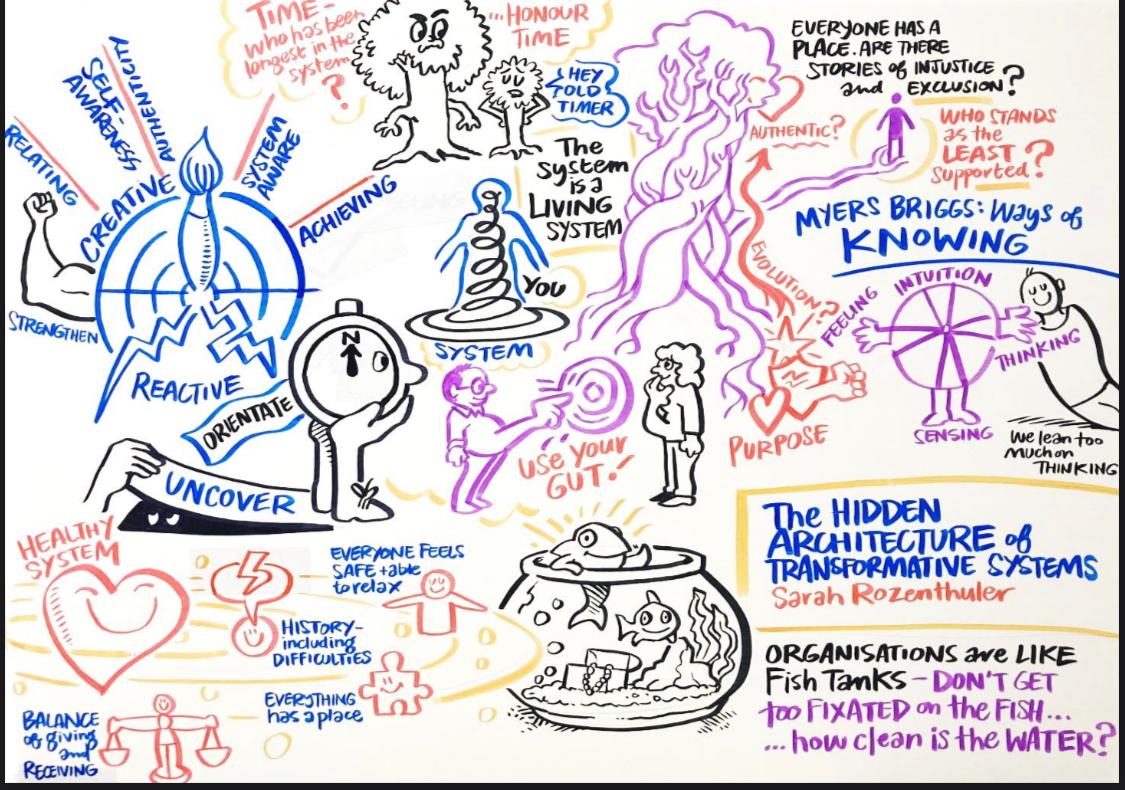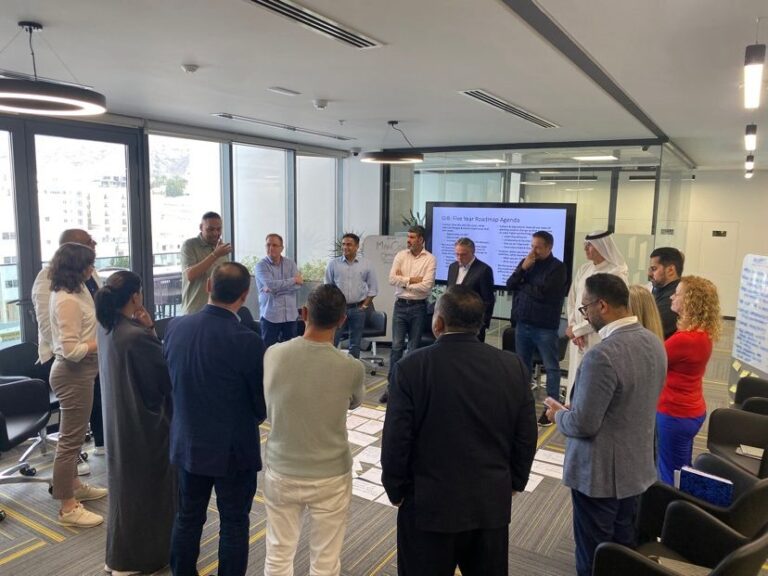We’re all familiar with the notion of what makes people tick. When managers and leaders tune into what motivates people, it nurtures better relationships and stronger performance. It’s less common to ask: What makes your organisation tick? This powerful question throws a light on what makes one organisation thrive and another derail.
Every organisation has a hidden ‘architecture’—a framework woven deep into its fabric that influences how it functions, evolves, and ultimately thrives. Often, leaders think that what makes their organisation tick lies in clear strategies, robust policies, and motivated people. But what if the real forces driving your organisation’s performance lie in the unseen connections, loyalties, and patterns that form the backbone of your company?
These invisible dynamics make or break your culture. Understanding how they operate enables a leader to ‘scan’ beneath the surface of their organisation to see what lies beneath common organisational challenges, whether these are missed targets, sudden departures or a festering bullying culture. The good news is that it is within the reach of any leader to develop their systemic awareness and there’s a great tool to help with this.
The roots of the ‘hidden architecture’
Imagine walking into an organisation where everything seems right on the surface—talented teams, a clear vision, and resources aplenty. Yet, despite these visible strengths, something feels “off.” Teams struggle with collaboration, talented individuals burn out, and innovative ideas fail to gain traction. This is where the hidden architecture, which systemic constellations reveal, comes into play. Systemic constellations, developed by German psychotherapist Bert Hellinger, illuminate the invisible dynamics that can either support or impede the success of an organisation.
We can understand the shift in perception that systemic awareness calls for with the following image. Dr William Tate, founder of the Institute of Systemic Leadership, uses the metaphor of a ‘fishtank’ to represent how an organisation is a living system. It is, however, a rare occurrence that managers focus on the quality of the fishtank and what surrounds the fish. Managers and leaders mostly notice individual fish (people) and then become fixated on them. But if the water is stale, the fish are depleted. If there’s no oxygen in the water, there’ll be no movement in the fish. Wise leaders “do not blame the fish for their poor appearance or performance. They do not take the fish out from time to time to give them a spot of training, tell them to smarten up and look more lively, and then plop them back in the same dirty water. Instead, they clean the tank.”
Understanding the hidden architecture of the ‘fishtank’ that shapes an organisational system in unseen and yet highly significant ways enables leaders to see and then ‘clean the tank.’
The Invisible Patterns of Leadership and Loyalty
One multinational corporation had a turnover issue with its senior leadership team that no policy or restructuring could fix. It was repeatedly rejecting new hires, like a body rejects a new organ. Through a systemic lens, it became clear that unresolved conflict and exclusion among previous generations of leaders were lingering within the organisation’s “DNA.” In other words, past dynamics were unconsciously shaping current decision-making and interpersonal interactions. Once the company acknowledged and addressed these hidden dynamics through doing a mapping exercise and having an authentic dialogue, leaders found a renewed sense of stability and alignment. They began to make clearer decisions, resulting in stronger retention and morale across the board.
Uncovering Unseen Loyalties and Blocks to Innovation
Another case involved a start-up that, despite having a highly skilled, ambitious team, could not get its new ideas to market. Teams would develop products that fell apart in execution, and the enthusiasm of the founders kept getting extinguished. Systemic constellations revealed that the company was operating under a hidden loyalty to turning a profit at all costs which was at odds with the founding purpose (providing an IT service to clients who had been unable to afford it previously.) This inspiring purpose, which had initially propelled the start-up forward, had become eclipsed by a drive to meet ambitious financial targets as the company grew. This ‘replacement’ purpose, embedded in the “hidden architecture” of the organisation, was unconsciously blocking innovation. Once the team talked together about its origin story and realigned its purpose, ideas began to flow more freely, propelling the company to new heights.
Healing Organisational Trauma
Systemic constellations also show us that when an organisation undergoes a traumatic event—whether it’s a major restructuring, sudden layoffs, or a challenging merger—its effects linger in the system. One organisation that experienced sudden layoffs found that, even years later, employees felt disconnected and apprehensive about future change. A constellation exercise helped the team to acknowledge and release the latent pain from this event, bringing back a sense of belonging and unity.
The systemic impact of traumatic events might explain the ‘stubbornly high’ failure rate of transformation programmes – whether a major change to a business model, customer experience or back office – despite advances in technology. Recent research has found that leaders who combine a rational with an emotional and systemic approach to making transformational changes can increase their likelihood of success by two and a half times, from 28% to 78%.[1] When leaders align their people around a compelling purpose and create safe spaces where people can speak up, they inject life-giving oxygen into their ‘fishtank’ and the whole ecosystem benefits.
Uncovering the Hidden Architecture of Success
Systemic constellations bring awareness to hidden dynamics, allowing organisations to unlock untapped potential. They shift us from asking, “What do we need to fix?” to “What patterns do we need to understand?” For example, there might be patterns of:
- Ongoing stories of injustice and exclusion
- A lack of resources for people standing in the least supported place
- A disrespect for ‘old timers’ who then over emphasise ‘we’ve tried that before’
- The founders of the organisation being forgotten or excluded
- A lack of acknowledgement of the difficulties the organisation has faced
By illuminating unseen dynamics, organisations can bring alignment, resilience, and vitality to their systems. Managers and leaders who see their organisations as a ‘living system’ do not ask ‘what’s wrong with the ‘fish’ (people)?’ but ‘how clean is the water?’ In a similar way, you might just find that the hidden architecture of your business holds the key to unleashing its full potential through an understanding of what makes your organisation tick.
[1] EY and Saïd Business School (2022) The Future of Transformation is Human.https://assets.ey.com/content/dam/ey-sites/ey-com/en_gl/noindex/ey-the-future-of-transformation-is-human-report.pdf






